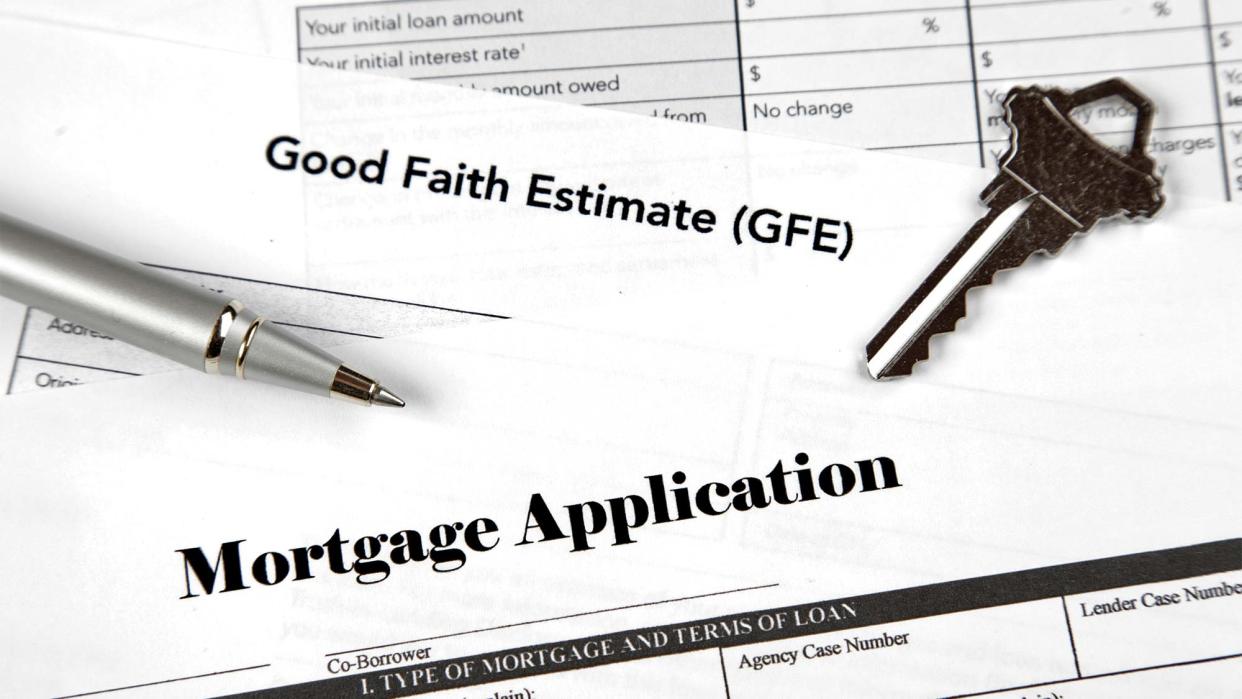What Is a Good-Faith Estimate? A Way to Shop for the Best Home Loan
John Cooke/iStock
When you apply for a mortgage to buy a home, within three days you will receive a document known as a good-faith estimate, or GFE (it may also go by another name, loan estimate). So, what is a good-faith estimate?
Whatever you happen to call it, the purpose of this important piece of paperwork is to outline the approximate fees you would be expected to pay if you move forward with this lender to close on your home. Got it?
Granted, receiving a good-faith estimate is no guarantee that a lender will give you the loan (for that, you’ll have to wait for the results of your application). Nor does it commit you to working with that lender.
Rather, a GFE is a way for home buyers to shop around for the best loan by comparing the fees outlined within.
In other words: You should ideally scrutinize not just one GFE, but two or three to see which one offers the best deal.
“It’s important for a borrower to know that the lender fees may vary,” says Michael Sema, CEO of Get a Rate. “So make sure to compare and shop, shop, shop.”
How GFEs can help you find the right loan
Home buyers will find that a typical GFE/LE includes estimates for the following:
Loan processing fees
Interest rate (and its potential for future change if not fixed)
Cost of taxes and insurance/government fees
Third-party fees (like attorney or survey reviews)
Special features (like penalties for paying off a loan early)
Total closing costs
So how do they come up with their overall numbers? The lender determines certain fees based on the borrower’s qualifications (such as your credit score), some on general umbrella fees like taxes, and still others on prices they’ve put on their own services (like for processing the paperwork). This, of course, is why it pays to not just settle for the first lender who deems you worthy of a loan. Odds are if one does, others will, too—perhaps including lenders who might cut you more of a bargain!
But keep in mind, they’re called good-faith “estimates” for a reason: Even if the lender grants your loan and you decide to move forward with it, some of these fees may change slightly by the time you close on your home. Luckily, we really do mean slightly. If you’re dealing with a legit and reputable lender, it won’t be a whole bait and switch (because otherwise, what’s the point of giving you a heads up about fees at all?).
GFEs: What can change vs. what stays the same
Thankfully, many of the fees you see on a good-faith estimate should stay exactly the same by the time you close. These include the following:
The loan amount
The interest rate (if it is a fixed-rate mortgage)
Your monthly payments
Lender/origination fees, which cover the cost of processing the loan
Costs that can change by the time you close include the following:
Prepaid interest
Property insurance premiums
Initial escrow deposits
Fees for third-party services that the lender does not handle, like title companies and attorneys
There is also usually a section where borrowers have the option to look for their own third-party services for certain things like, say, termite inspection. This is where you might save a few bucks by spending a bit more time hunting for a deal.
What is a closing disclosure?
Once you do enter a loan agreement, at least three days before closing, you will also receive a closing disclosure, which should match up to the good-faith estimate—or at least be relatively close.
“There is even a section in the closing disclosure to show you how the two forms differ and by how much,” says Sema. “The loan estimate and closing disclosure work hand in hand to give the buyer an estimate of initial and final costs.”
Nonetheless, if you spot any major discrepancies between your GFE and closing disclosure, you should bring them up with your lender as soon as possible to prevent holdups with your closing.
—————
Watch: What Your Mortgage Broker Wishes You Knew
The post What Is a Good-Faith Estimate? A Way to Shop for the Best Home Loan appeared first on Real Estate News and Advice - realtor.com.
Related Articles



